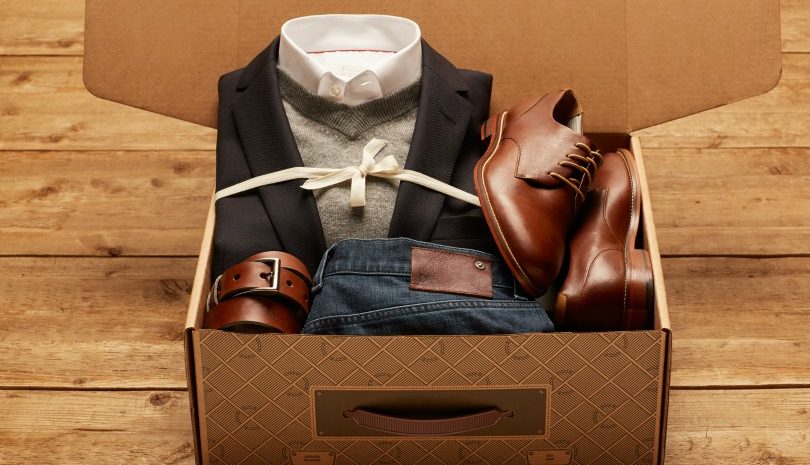Capitalising on the ‘menaissance’

“No one’s ever really given me any style advice. I wear what I want, and it doesn’t matter what other people think”
– David Beckham
Forbes recently released their seven under-the-radar retail trends for 2017 and there was one in particular that caught our eye so we thought we’d explore it a little bit further. They called it ‘The Menaissance’.
In 2017 we will continue to see men take the lead in spend(ing). Already, for the first time ever, men in America are outspending women by 13 per cent and early indicators predict that the menswear market will expand 8.3 per cent next year according to The Ogilvy 2016 Men’s Shopping Report. That’s 1.5 times more than women’s.
There are conflicting arguments on why we are seeing such a change in spending behaviour, with some suggesting it’s because men have to spend more on clothing due to manufacturing costs as compared to women’s clothing and a lack of options, perhaps it’s because we are seeing more high street retailers widening their menswear offering, while others suggest it’s because of the pay disparity between genders.
Regardless of the “why”, what’s undeniable is that the men’s fashion industry is growing at a rate more than two times that of women’s fashion. There’s opportunity there to serve the far majority of men who are interested in fashion, and are willing to spend to get to their desired look.
In Australia, although the industry has had to contend with difficult retail conditions over the past five years, menswear stores have performed better than womenswear retailers according to IBISWorld.
Men, particularly younger generations, are becoming increasingly fashion-conscious and are more concerned with their appearance than their fathers and grandfathers. These consumers are prepared to spend more on how they look.
So how can retailers capitalise on ‘the Menaissance’? How do we best serve the male consumer and is there a difference compared to how we serve the female consumer?
We would argue that as a retailer targeting the male consumer, you cannot categorise all male consumers into one demographic-led target segment. With personality profiles and subconscious drivers being the biggest influence on shopping behaviour, a detailed consumer insights analysis to profile the personalities within your target market is the most successful way to ensure you’re serving your customer in the way that they desire and in the most profitable way for your business. However, these recent studies do show some key trends that we can learn from.
Men respond well to clear navigation instore and merchandising by complete outfit displays, so they can find products quickly and easily. Men want the process to be simple, appreciate guidance and seek a quick and painless shopping experience.
Apparel that represents utility, function and longevity tends to have a broader appeal to men. When it comes to updating their wardrobe, replacing worn out clothing/items is the top driver for men (63 per cent according to Ogilvy’s study), with a treat for themselves and sales/promotion as other popular drivers.
Spending on menswear is also influenced by brand reputation. Although men are generally less affected by changes in fashion trends than women, males have become increasingly concerned with their appearance and the brands they are associating with.
When it comes to making an in-person wardrobe purchase, American men are most persuaded by value (ie, item is worth the money – 53 per cent), looking good (i.e., feeling good in the item – 45 per cent) and good sales/promotions (42 per cent). This is reflected in the Australian market, with male consumers increasingly comparing prices online with those offered instore in order to find the best value.
The Ogilvy report said men under 35 are significantly more likely than their older counterparts to be influenced by ‘people’, specifically: customer service, knowledgeable sales stuff, engaging sales staff, pressure/guilt from sales staff when making an in-person wardrobe purchase. Consequently, educating your sales staff on engagement, making personalised recommendations (when wanted) to speed up the retail experience, and being able to read body language is key. Offer him a hassle free, easy and personalised shopping experience and male customers will reward your business with their loyalty.
IBISWorld suggests the industry is forecast to grow over the next five years. Revenue is forecast to increase by an annualised 1.6 per cent over the five years through 2021-22, to reach $5.1 billion. However Australian menswear bricks and mortar stores will continue to lose market share to online-only channels. In response to intensifying competition from pure-play retailers, it is expected that industry participants will focus on customer service within bricks and mortar, to boost their retail ecosystems and capitalise on ‘The Menaissance’.
Brian Walker is founder and CEO of Retail Doctor Group and can be contacted on (02) 9460 2882 or brian@retaildoctor.com.au. Vikki Weston, co-author of this column, is part of Retail Doctor Group’s Retail Insights team and can be contacted via email at vikki@retaildoctor.com.au.
This story first appeared on sister site, Inside Retail Australia.
Comment Manually
You must be logged in to post a comment.

No comments